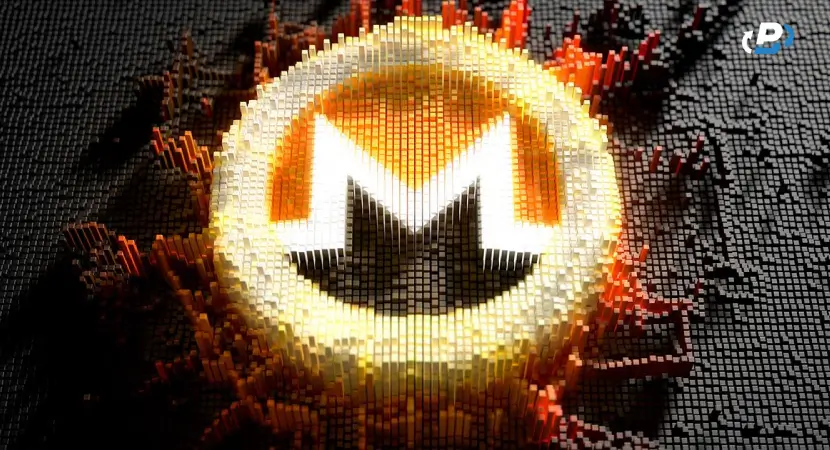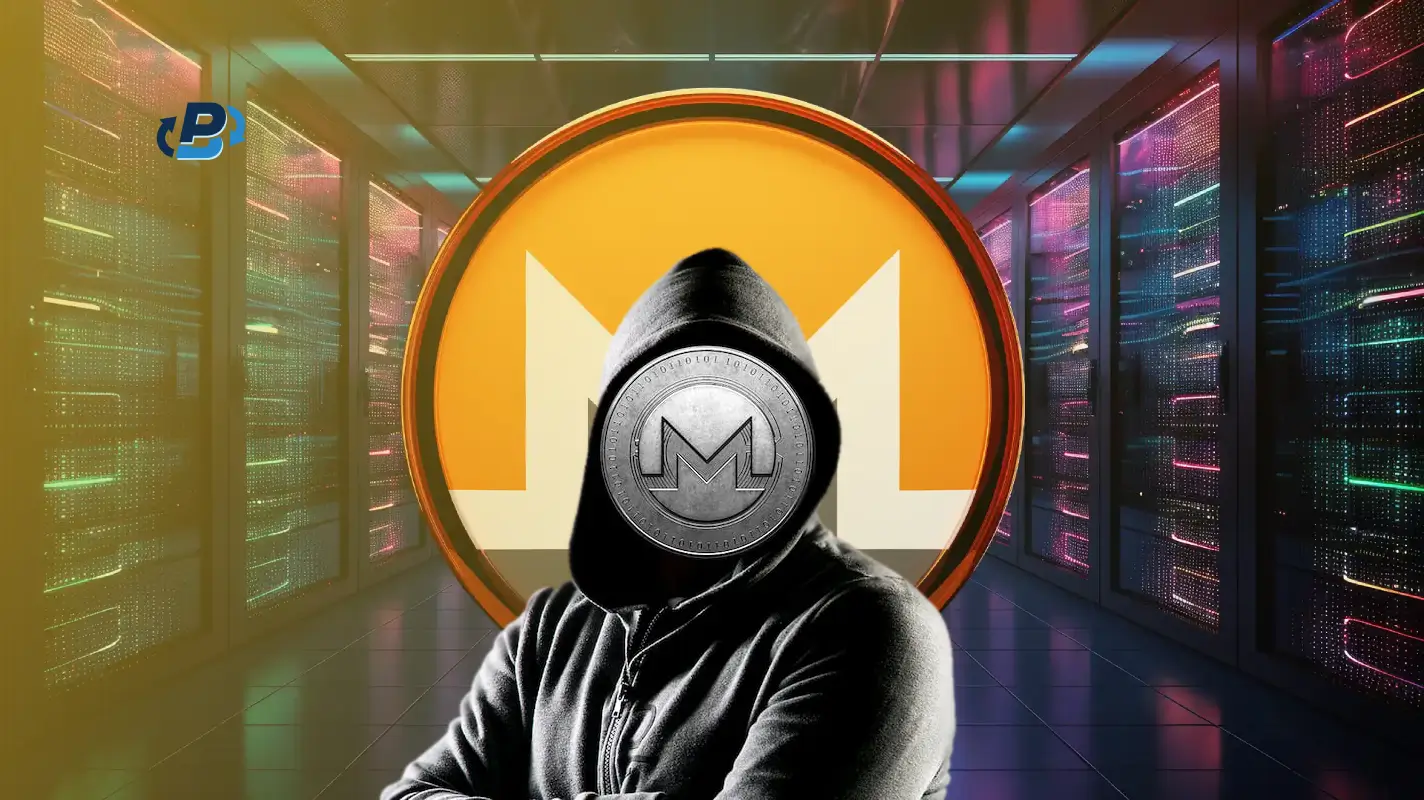To invent something is to find an untapped source of power that can be put to use, good or bad. Monero inventors realized the incredible power of the internet and encryption, combining them to create a cryptocurrency that prioritizes anonymity and private transactions. All Monero features are designed to enable anonymity, but two main Monero developers decided to eschew it and make their names public. Who invented Monero? Riccardo “fluffypony” Spagni and David Latapie, and a team of anonymous developers that includes users smooth, othe, NoodleDoodle, tacotime, and eizh, who took over the Bitmonero project created in April 2014 by thankful_for_today, a BitcoinTalk forum user, who forked a cryptocurrency called Bytecoin (BCN) that was made on the basis of the CryptoNote v 2.0 protocol published by the mystical “Nicolas van Saberhagen.” Together, they are the Monero community that safeguards the development of Monero in line with cypherpunk principles of privacy and anonymity online.
The Start of Monero — Bytecoin (BCN)
The very beginnings of Monero are shrouded in mystery and deceit. The first cryptocurrency based on the CryptoNote v 2.0 whitepaper was allegedly launched in July 2012 and was called Bytecoin (BCN), not to be confused with Bytecoin (BTE) that was launched in 2013 as a fork of Bitcoin. There is already a problem there — the CryptoNote v 2.0 whitepaper was published in October 2013, so unless the creator of BCN had a time machine, there was some fraud involved. There is the CryptoNote v 1.0 whitepaper, but it too had the release date after the alleged Bytecoin launch, namely in December 2012. People started connecting the dots and soon realized what was happening. The majority of BCN investigation is laid out in the BitcoinTalk forum thread titled “[BCN] Bytecoin.
Secure, private, untraceable since 2012,” which was started in 2014 and lasted until 2024, gathering over 8,000 user posts and over a million views. Within the first few pages, a perceptive user named “smooth” noted that there was zero mention of BCN on the internet prior to 2013. Nobody on the dark web had heard of it either, which led him to the conclusion that BCN developers most likely created and launched it in 2013–2014 and then fraudulently backdated the block timestamps.
The motive was simple: money. Mining the early BCN blocks in secret guaranteed the devs owned the vast majority of all BCN in existence before anyone else could get it; the first mined block rewarded the miner with 700,000 BCN out of 184 billion slated to ever be released. By April 2014, 150 billion were already mined, or over 80% of the total supply, calling into question the profitability of mining BCN at all. But, nobody else would participate in mining, owning, or trading BCN if they knew that, hence the backdating. As if that wasn’t enough, there were other issues. One user called “thankful_for_today” mentioned that he wanted to get involved with the project, but the BCN daemon code behaved poorly and consumed a lot of RAM. He announced his own fork of Bytecoin that will start from block zero, with user “eizh” volunteering to help out.
Backdating the CryptoNote Whitepapers
Others discovered more signs of backdating. User “rethink-your-strategy” noted in a separate thread titled “Blowing the lid off the CryptoNote/Bytecoin scam (with the exception of Monero)” that copyright attributions in Bytecoin’s code pointed to CryptoNote whitepapers, leading him to conclude that the same people who wrote the CryptoNote whitepapers were the makers of Bytecoin. The Bytecoin website presented those people, but they were unknown to the cryptocurrency community; their names didn’t come up in internet searches either and were later scrubbed from the website. The CryptoNote v 2.0 whitepaper had a predecessor, the 1.0 version. Rethink-your-strategy downloaded both papers as PDF files and pored over them, discovering that both were fraudulently backdated. The v 1.0 whitepaper was allegedly published in September 2012, but its properties revealed it was made in a PDF creation program from 2013, and it also had two footnotes that were unused in the text, one of which pointed to a BitcoinTalk thread from May 2013.
The same two footnotes were found in the v 2.0 whitepaper too, but they were used in the text there. His conclusion was that the makers of Bytecoin first made the v 2.0 whitepaper in March 2014 and then stripped some parts of it to create the v 1.0 whitepaper in April 2014 to give an illusion of transparency and continuity, but accidentally left the footnotes in. Both whitepapers later had those footnotes removed. He also links Andrey Sabelnikov, a famous Russian creator of botnet code who was sued by Microsoft for it, to the creation of Bytecoin and other CryptoNote cryptocurrencies.
The Mystery In BCN Blocks
Other people started to dig through early BCN blocks, only to find messages from works such as Timothy C. May’s Cyphernomicon, Neuromancer, and others. User “x0rcist” discovered that the BCN Onion website had a hidden PGP decryption key that revealed a hidden message in BCN blocks, which read:
"Cryptonote isn't a cult. It isn't a government, it isn't banks. It isn't Satoshi Nakamoto. Cryptonote is fundamentally about evolution of man. About taking us to the next step. Not the next biological step. It's more than that.
It's about man overcoming humanity. Digging deep inside to find infinity. Realizing all our limitations, weaknesses, and suffering are our own creations. We live in a Matrix-like world and we’re here to pull out the few who sees past it, and then guide them further down the path. Except our matrix isn't a computer program built by machines. Our matrix is the belief that we even exist in the first place. Our egos built our matrices. But we can't see it because our egos have convinced us that they are us.
Cryptonote revolution occurs on every level: physical, subconscious, emotional, mental, social, technical. Those who find their way to the enlightenment offered are those who will change the world of not just tomorrow but the world of today."
That message is an almost verbatim copy of a February 2014 post from 4chan’s /x/ board, which refers to the Cicada 3301 series of puzzles that appeared on 4chan around that time and ran for a while. Photos of topless ladies with Cicada tattoos, Cicada posters that simultaneously appeared around the world, and other promotional tie-ins led people to the conclusion that Cicada puzzles are just an elaborate prank played on people who have too much time on their hands. x0rcist also cracked the message hidden in the source code of the Bytecoin website, which referred to Pink Floyd’s “Another Brick In the Wall” song lyrics and read, “Keep looking.”
Abandoned Since 2019
Despite the impressive effort put into developing Bytecoin and attracting attention to it, there hasn’t been any development of it since 2019. The BCNDEV GitHub repository shows the last commit was in July 2019, and the official website’s development timeline also ends around the same time. There are exchanges selling BCN, such as Gate.io, where it goes for about 5,000 BCN for 1 USDT, but posters from the 10-year BitcoinTalk thread claim it’s not possible to withdraw it, which I presume is due to the lack of mining power needed to process the transaction.
Bytecoin Is Reborn As Bitmonero (BMR)
People who invented Monero were already assembled in that thread, so all they had to do was find someone with a vision to reboot the Bytecoin project. That someone was thankful_for_today, who forked the Bytecoin code and announced the launch of the new cryptocurrency on April 18, 2014. Why didn’t he create his own code? Posters in the main BitcoinTalk thread were impressed with how clean and refined the Bytecoin code was — it was miles ahead of Bitcoin’s, because it was presumably made by a professional coder.
By forking the BCN code, thankful_for_today and his team could build off of it while making it more fair and hopefully getting more people involved. The idea for the name came from Esperanto, a universal European language created in the 19th century on the basis of all European languages. The language was meant to facilitate understanding of European peoples from different countries without using English, a cross-border exchange of information without censorship or relying on a central authority. In Esperanto, the word “monero” means “coin,” and the logic is simple — just like Esperanto helps people communicate, Bitmonero, or BitCoin, will help people exchange funds. Sadly, the Bitmonero launch did not go well.
The devs who invented Monero bickered over features instead of creating a Windows client, with eizh crying out, “Wait, you won’t have Windows available?” The trouble continued as the launch date loomed closer with little agreement or discussion on anything, because thankful_for_today seemed adamant to do his thing and disappear from the internet for days at a time. After the rocky launch, someone or something activated an army of cryptobots to automatically execute commands, which clogged the network and more than tripled the mining difficulty. And then, a miracle happened and someone bought 100 BMR for 0.005 BTC, marking the first public trade of BMR.

The Core Team Launches Monero
Despite the first trade of BMR, there was no future in Bitmonero and someone had to break the news to thankful_for_today. Smooth was the bearer of bad news, stating that his vision is way behind what the CryptoNote technology can do. Though the discussion focused on technical issues, there was also a notable desire to keep the project decentralized, with people voting on issues rather than listening to a leader, whoever that might be. After some more discussion, the rest of the team decided to relaunch Bitmonero.
After dropping “bit” from the name and using just the “monero” part, the team who invented Monero bought all the Monero-related domains they could get their hands on, which is something thankful_for_today didn’t do for Bitmonero, leading to cybersquatters taking website names. Thankful_for_today demanded to be let into the Monero project, with full ownership no less. The team knew that he isn’t the right person to lead the project of this magnitude, so they repeatedly rejected his authority, but did allow him to contribute code. Eizh later posted that thankful_for_today only contributed 10ish lines of code and a supposed bug fix that created a vulnerability through which Monero was attacked.
The official announcement of Monero was in an April 25, 2014, BitcoinTalk thread titled “[XMR] Monero - A secure, private, untraceable cryptocurrency.” The thread lasted up until December 2024, accruing 42,000 posts across 2,126 pages. There was no official developer team at launch; people worked on what they felt like working on at the time. User “othe” offered to create a GUI, while NoodleDoodle worked on optimizing the Windows binaries. The team who invented Monero then got two vocal developers: David Latapie and Riccardo Spagni.
David Latapie
On May 11, 2014, David Latapie, a French member of the Monero Core Team, announced the world’s first Monero exchange (now defunct). He wasn’t in it for the money, but to inspire others to take action and resist what he called “cryptofiat.” In October 2014, David posted a BitcoinTalk thread titled “United we stand, divided we fall,” in which he lamented the passivity and in-fighting of the cryptocurrency community. In his opinion, nation states were on their way to create official cryptocurrencies, such as cryptodollars or cryptoeuros, which will make Bitcoin irrelevant and enable surveillance. David later became the European director of Monero, holding a [speech praising Monero’s anonymity features] in March 2015, but disappeared from the public in the coming years. He withdrew from the public view in 2016–2017. One of his posts on BitcoinTalk stated he got involved with a scammer, which made him take pause and reconsider what he’s doing. David’s last activity on BitcoinTalk was on February 6, 2017. His LinkedIn profile has been deleted, and his last Reddit post was on June 4, 2016, with his listed Skype username not responding to any messages.
Riccardo “fluffypony” Spagni
Riccardo joined the Monero Core Team in 2014, becoming the lead maintainer, the public representative for the project, and its spokesman. Riccardo decided to step down in December 2019 after he got involved with Tari, a protocol that uses the Monero blockchain to create digital assets. He was one of the four crypto enthusiasts called “Magical Crypto Friends,” who hosted a podcast of the same name in 2017–2021, providing updates on Monero and other cryptocurrencies, and attended the annual Magical Crypto Conference. Like David, he held presentations, such as the 2018 “Monero: The World’s Least Professional Cryptocurrency.” In July 2021, Riccardo was arrested in the US on behalf of the South African government, which accused him of stealing $100,000 from a company he worked for in 2009–2011. After his arrest, his wife posted a message from him on Twitter (now called “X”), stating that it was a misunderstanding and that Riccardo was trying to get it resolved ever since he first became aware of it. He agreed to the extradition, with no further information on how his court case went and no updates on his whereabouts that I could find.
What Is the Origin of XMR?
Wonderful inventions can have unusual starts, such as accidents and criminal acts. What is the origin of XMR? One or more anonymous developers that likely included Andrey Sabelnikov, a Russian botnet coder, created Bytecoin (BCN) on the basis of the CryptoNote v 2.0 protocol authored by “Nicolas van Saberhagen” and created in March 2014 but fraudulently backdated to October 2013, which was forked into Bitmonero by thankful_for_today in April 2014, and the project was shortly after rebooted as Monero by the Core Team.
When Was the First Monero Transaction?
We rarely know the exact time and date an invention was put to use, but we are pretty close to the exact second in the case of Monero thanks to its blockchain. When was the first Monero transaction? It occurred on April 18th, 2014 in block 110, and the amount sent was approximately 6.99 XMR, with the fee being 0.000001 XMR. The timestamp is 2014-04-18 12:13:09 UTC, and it has 3349538 confirmations.
Why Is Monero Being Delisted?
If you can’t beat them, join them, but what do you do if you don’t want to join them either? Well, if you’re a government, you can just ban them, or in the case of Monero, force exchanges to delist it. Why is Monero being delisted? Because it’s uncontrollable and untraceable, regulators fear that it will be used for illegal activities like money laundering and tax evasion. This has led to mass delisting of Monero by exchanges such as Binance, OKX, ShapeShift, Bittrex, and Kraken (for its European users), which wanted to avoid legal risks and challenges in complying with KYC and AML regulations.
PlasBit Compared to the Team Who Invented Monero
The cryptocurrency ecosystem is filled with flaky people and scams. In my opinion, Bytecoin was a scam through and through, because both the whitepaper and the development team have too many red flags, though I would describe it as “competently made but incompetently executed.” Bitmonero was probably not a scam, but rather a project with a flaky leader and no vision. That makes Monero rising out of Bytecoin and Bitmonero all the more surprising. I think that shows the power of smart people getting together and working diligently on producing a consistent product or service. That’s exactly what I found with PlasBit. In my experience, PlasBit is a rare gem in the cryptocurrency world, seeing how it features honest, competent people who execute swiftly and precisely. I’m glad to be a part of that team as we’re exploring the wondrous world of cryptocurrencies and innovating on how to make the best articles the internet has ever seen. I promise that we’re going to be vocal on important topics and not stay silent when it comes to sharing authentic information with the public.







